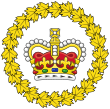
The Politics of Alberta are centred on a provincial government resembling that of the other Canadian provinces, namely a constitutional monarchy and parliamentary democracy. The capital of the province is Edmonton, where the provincial Legislative Building is located.
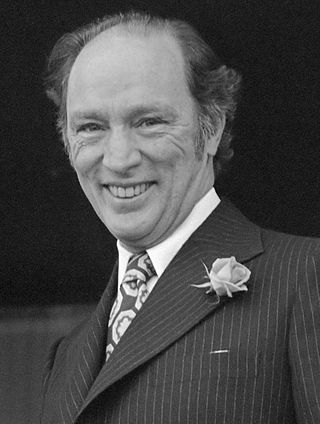
The 1968 Canadian federal election was held on June 25, 1968, to elect members of the House of Commons of Canada of the 28th Parliament of Canada.
The Canadian electoral system is based on a parliamentary system of government, modelled on that of the United Kingdom.
Canada holds elections for legislatures or governments in several jurisdictions: for the federal (national) government, provincial and territorial governments, and municipal governments. Elections are also held for self-governing First Nations and for many other public and private organizations including corporations and trade unions. Municipal elections can also be held for both upper-tier and lower-tier governments.
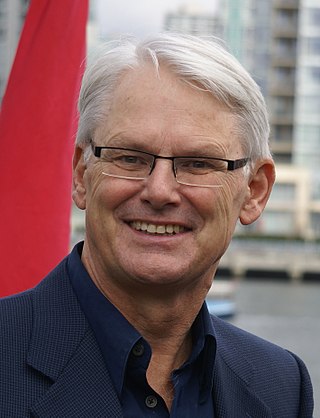
The 2005 British Columbia general election was held on May 17, 2005, to elect members of the Legislative Assembly (MLAs) of the Province of British Columbia (BC), Canada. The British Columbia Liberal Party formed the government of the province prior to this general election under the leadership of Premier Gordon Campbell. The main opposition was the British Columbia New Democratic Party, whose electoral representation was reduced to two MLAs in the previous provincial election in 2001.

A referendum was held in the Canadian province of British Columbia on May 17, 2005, to determine whether or not to adopt the recommendation of the Citizens' Assembly on Electoral Reform to replace the existing first-past-the-post electoral system (FPTP) with a single transferable vote system (BC-STV). It was held in conjunction with the BC Legislative Assembly election of 2005. Voters were given two ballots at that time: a ballot to vote for a Member of the Legislative Assembly of British Columbia (MLA) in their constituency and a referendum ballot. The referendum received considerable support from the electorate but failed in meeting the 60-percent threshold that had been set. A second referendum was held in 2009.
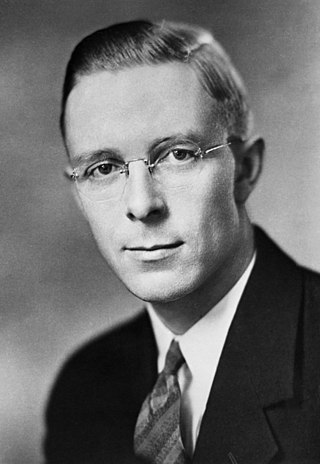
The 1948 Alberta general election was held on August 17, 1948, to elect members of the Legislative Assembly of Alberta.
The Citizens' Assembly on Electoral Reform was established by the government of the province of Ontario, Canada in March 2006. Modelled on the British Columbia equivalent, it reviewed the first past the post electoral system currently in use to elect members of the Ontario Legislature, with the authority to recommend an alternative. In May 2007, the Assembly recommended, by a decision of 94–8, that Ontario adopt a form of mixed member proportional representation (MMP).

A referendum was held on October 10, 2007, on the question of whether to establish a mixed member proportional representation (MMP) system for elections to the Legislative Assembly of Ontario. The vote was strongly in favour of the existing plurality voting or first-past-the-post (FPTP) system.
BC-STV is the proposed voting system recommended by the Citizens' Assembly on Electoral Reform in October 2004 for use in British Columbia, and belongs to the single transferable vote family of voting systems. BC-STV was supported by a majority of the voters in a referendum held in 2005 but the government had legislated that it would not be bound by any vote lower than 60 percent in favour. Because of the strong majority support for BC-STV, the government elected to stage a second referendum in 2009, but with increased public funding for information campaigns to better inform the electorate about the differences between the existing and proposed systems. The leadership of both the "yes" side and the "no" side were assigned by the government. The proposal was rejected with 60.9 percent voting against, vs. 39.1 percent in favour, in the 2009 vote.

The Politics of British Columbia involves not only the governance of British Columbia, Canada, and the various political factions that have held or vied for legislative power, but also a number of experiments or attempts at political and electoral reform.

Following the 2005 electoral reform referendum, British Columbia held a second referendum on electoral reform in conjunction with the provincial election on May 12, 2009. As in 2005, voters in 2009 were asked were asked which electoral system should be used to elect legislators: the existing first-past-the-post electoral system or the BC single transferable vote electoral system (BC-STV) proposed by the British Columbia Citizen's Assembly on Electoral Reform to ensure more proportional representation in the provincial Legislative Assembly.

The Canadian province of Newfoundland and Labrador is governed by a unicameral legislature, the House of Assembly, which operates under the Westminster model of government. The executive function of government is formed by the Lieutenant Governor, the premier and his or her cabinet. The politics of Newfoundland and Labrador is defined by a long history, liberal democratic political institutions and a unique political culture.
A referendum was held in the Canadian province of Prince Edward Island on November 28, 2005, to determine whether to adopt the Mixed Member Proportional (MMP) system as recommended by the Prince Edward Island Electoral Reform Commission in 2003.
Electoral reform is a change in electoral systems which alters how public desires are expressed in election results.

The 2019 Prince Edward Island general election was held to elect the members of the 66th General Assembly of Prince Edward Island. The vote in 26 of the 27 districts was held on 23 April 2019, while the vote for the member from Charlottetown-Hillsborough Park was deferred to 15 July due to the death of the Green Party's candidate. However, Charlottetown-Hillsborough Park still voted in a referendum on electoral reform. Natalie Jameson won the deferred election in the riding.
The House of Commons Special Committee on Electoral Reform (ERRE) (French: Comité spécial sur la réforme électorale) was a special committee of the House of Commons of Canada established during the 42nd Canadian Parliament to investigate reforms to the Canadian electoral system. The formation of "an all-party Parliamentary committee to review... [electoral] reforms" was an election promise by Liberal Party leader Justin Trudeau in the 2015 federal election. After the Liberals won a majority in the election, and Trudeau became Prime Minister of Canada, he indicated the formation of a special committee was a priority in his mandate letter for Minister of Democratic Institutions Maryam Monsef. Shortly after the committee submitted its report to Parliament on December 1, 2016, Monsef was transferred to the position of the Minister of Status of Women and Karina Gould took over the electoral reform file. Shortly after taking her position, Gould announced that the government would no longer be pursuing reform of the electoral system, stating "It has become evident that the broad support needed among Canadians for a change of this magnitude does not exist."
A non-binding referendum on electoral reform was held in the Canadian province of Prince Edward Island between 27 October – 7 November 2016. This was the second electoral reform referendum to be held in Prince Edward Island, following a vote to maintain the status quo in 2005. The referendum asked which of five voting systems residents would prefer to use in electing members to the Legislative Assembly of Prince Edward Island. The referendum involved four instant run-off counts and indicated mixed member proportional representation was the majority choice with 55.03% support on the final ballot, with support of 52.42% of votes cast.

A referendum on electoral reform took place by mail-in ballot between October 22 and December 7, 2018, in the Canadian province of British Columbia. 61.3 percent of voters supported maintaining the first-past-the-post voting system rather than switching to a proportional representation voting system, which was supported by 38.7 percent of voters. This was British Columbia's third referendum on electoral reform, following ones in 2005 and 2009.
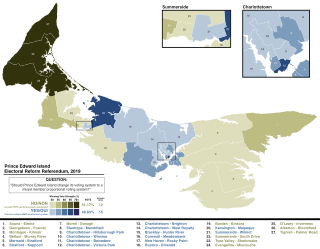
A referendum on electoral reform was held on April 23, 2019, in the Canadian province of Prince Edward Island – simultaneously with the 2019 provincial election – to determine if the province should adopt a mixed-member proportional representation voting system (MMP). A narrow majority voted to keep the existing first-past-the-post system. However, the referendum was not binding, as neither the yes or no side received majority support in 60% or more of the province's 27 electoral districts.

